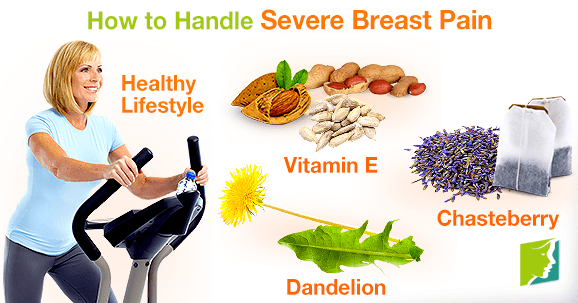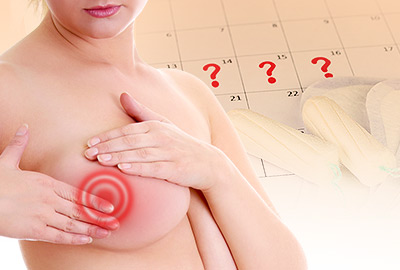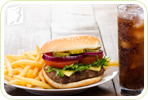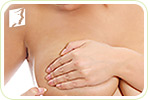Severe breast pain can become very disruptive in a woman's life. It can reach the point where even the slightest contact is uncomfortable. While some women feel general breast tenderness that lingers but can be ignored, others experience intense pain just from simple movements. Putting on a shirt, going about your day, and even being intimate can turn into frustrating challenges. Whether you are experiencing it for the first time during menopause, or you know it from years of premenstrual syndrome (PMS), the following solutions can help you manage the discomfort.
Dandelion
Dandelion has a cleansing effect on the body that is useful for several health conditions. In the case of severe breast pain, dandelion's diuretic properties help remove excess water from the body, including the breasts, which can relieve heaviness and aching. In addition, it can reduce inflammation and has a calming effect. Anxiety can trigger breast pain, and dandelion can aid in relaxation.
Chasteberry
Chasteberry is a standard treatment in Europe for severe breast pain. Studies have found that it can reduce pain by regulating levels of prolactin, a hormone that is responsible for milk production when women are breast feeding. Prolactin can cause uncomfortable swelling and pain when overproduced. Chasteberry is widely available online and in specialty shops, and it is primarily found in supplemental and tea form.
Vitamin E
Research has shown that vitamin E taken over a two-month period can help reduce cyclical breast pain. This essential nutrient can be taken as a supplement, and it is also found in safflower seeds, almonds, and other nuts. If you experience severe breast pain regularly, you may be deficient in vitamin E. Your physician can tell you how to adjust your vitamin E intake accordingly so that you can reach the levels your body needs.
Healthy Lifestyle
Breast pain is typically worse for people who are not physically fit. When you are active and eat a balanced diet, breast pain should be less intense. Though you might not feel like running around when your breasts hurt, with a supportive sports bra, low-impact exercises can be a positive solution. Try swimming, dancing, or the elliptical machine at the gym for 40 minutes at a time, aiming for a total of two to three hours of exercise per week.
Severe breast pain is common, especially during menopause, but that doesn't mean you have to simply endure it. If it becomes so extreme that it's encroaching on your ability to do things, try some of these positive adjustments to your routine. If you notice discharge, infection, or the formation of a new lump alongside the pain, you should seek immediate medical attention.
Sources
- National Institutes of Health. (2012). Breast Pain: MedlinePlus Medical Encyclopedia. Retrieved May 8, 2014, from http://www.nlm.nih.gov/medlineplus/ency/article/003152.htm
- National Institutes of Health. (2012). Dandelion. Retrieved May 8, 2014, from http://www.nlm.nih.gov/medlineplus/druginfo/natural/706.html
- NYU Langone Medical Center. (n.d). Chasteberry. Retrieved May 8, 2014, from http://www.med.nyu.edu/content?ChunkIID= 21649
- Office of Dietary Supplements. (2013). Vitamin E. Retrieved May 8, 2014, from http://ods.od.nih.gov/factsheets/VitaminE-HealthProfessional/
- Parsay, S. , Olfati, F. & Nahidi, S. (2009). Therapeutic effects of vitamin E on cyclic mastalgia. The breast journal, 15(5), 510-514. doi: 10.1111/j.1524-4741.2009.00768.x




